VIDEO: Pulveriser test
Frustrated with regular repair work being carried out on a mechanical pulveriser – and getting no satisfaction from staff comments about it – I took matters into my own hands to find out why the unit was breaking apart as often as it did.
Now, three years later I've returned to see if the attachment had held up to the re-design work.
There weren't many pulverisers around when I purchased it in the mid-/late-90's, from a now defunct local manufacturer. Having owned it for almost 10 years before starting to do any serious work, I was quickly disappointed in its lack of ability to withstand regular on-going work. Mentally I blamed the long-gone manufacturer for not spending enough time on research and development before marketing their pulveriser attachment to customers.
Now doing regular concrete breaking work, the pulveriser's first re-build was needed after a paltry 500 hours of use. This continued to happen at similar intervals. Each time it was repaired well enough, but by engineers who I eventually worked out didn't really have ample understanding of the physics and pressures involved with such a piece of equipment.
Having explored the options of other pulverisers for sale on the market, I opted to steer away from hydraulic units as their opening and closing speed were too slow for my liking. I felt other mechanical units still hadn't been developed enough to address some of the issues we were dealing with.
Around 2008, after the second or third rebuild, I decided action was needed to prevent further money being bled in expensive repair bills. To do this I climbed out of the office and spent a couple of months working exclusively on the pulveriser in order to get a handle on what was required to strengthen the unit.
This was quite an interesting experience, and confirmed a lot of my initial suspicions. As with most attachments, an experienced operator can understand exactly what the attachment is 'feeling' by the pressure that comes back through the excavator controls. This process helped determine that the tooth design was wrong, with a lot of pressure being angled off into nothingness instead of towards the product being broken up. It also helped to confirm the pressure points and the areas of the pulveriser that needed strengthening.
Once all the necessary modifications had been completed, I eagerly tried out the unit and was immediately pleased with the redesign work. One thing that wasn't added during the re-vamp was a large damper which I wanted fitted to dissipate the shock loading on the excavator boom. Unfortunately this costly add-on was outside the budget and time constraints at the time.
Now three years later, I have returned to the pulveriser to see how the re-design had stood the test of time. The unit is now with West Auckland-based Western Aggregates & Soil Ltd, which is a concrete and soil recycling business.
Fitted to a 21 tonne Hitachi ZX210, the pulveriser is used frequently to downsize large concrete pieces to enable them to fit into a primary crusher.
Looking around the unit, I was pleased to see all the areas that had been strengthened were still intact with no apparent sign of fatigue. The teeth – even though worn and soon in need of reconstruction – have held up well over the past three years and I'm of the opinion that they had worn better due to the different design.
Of course, there is nothing like a proper test on concrete, so after donning the appropriate PPE gear, I cranked up the excavator and got into some real work. It was surprising at how quickly the feel of the pulveriser came back, and before long felt like I was operating quite efficiently.
During this work, I was reminded of another design change that was done during the rebuild: this was the widening of the base plate to enable it to rake back larger quantities of product, as well as giving the unit the ability to pull out individual pieces of concrete from a pile. Another bonus is that the wide base makes the pulveriser safer by giving it more stability when removed from the excavator. There were initial doubts about widening the base plate, but they proved unfounded, and in actual fact it could have been made even wider without being detrimental to the operation of the unit. While the widening of the base seems a trivial matter, a lot of machine time is spent raking through product, so the addition of this was a big efficiency gain.
With a couple of hours pulverising concrete under my belt I shut the machine down, happy with the results. It had all operated pretty much as remembered, and I could feel the pressure being applied in the right places when breaking up concrete. Some large pieces had to be worked on progressively until they were correctly sized, but that was something I had expected and no doubt a new set of teeth would have helped it work even more efficiently.
I still think that the energy transferred through to the excavator by the harsh shock of the concrete when it breaks apart needs to be handled correctly, and it appears manufacturers have not addressed or are unaware of this matter. Instead they have decided to build bigger, heavier pulverisers and connection points to compensate.
I believe that until the shock loading is dissipated correctly, the energy will continue to find its way to weak points – which are usually the quickhitch and strut hook areas, but could just as easily promote faster deterioration of any weak point on the excavator. Of course, this is just my personal opinion, but an option probably worthy of some further research.
Overall though I'm happy with the redesign work on the mechanical pulveriser. Previously it was being rebuilt at regular intervals, and this has not occurred in the last three years.
Western Aggregates & Soil company management tell me however that the heavy-duty quickhitch needed rebuilding a year or so back, and which I feel does go some way to supporting my theory.
For the latest reviews, subscribe to our Deals On Wheels magazine here.
 The widened base plate has incresed efficiency
The widened base plate has incresed efficiency
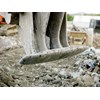
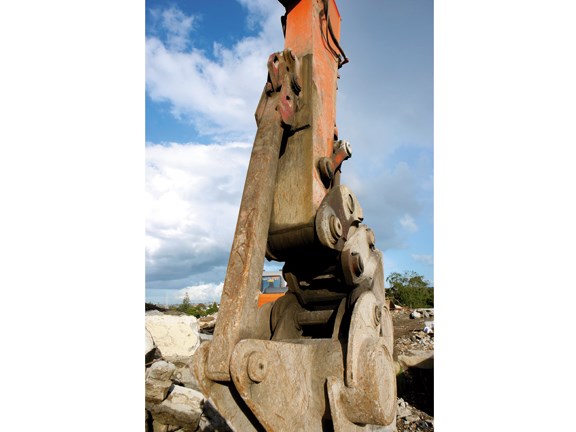 A damper fitted to the pulveriser arm would dissipate shock energy
A damper fitted to the pulveriser arm would dissipate shock energy


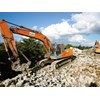
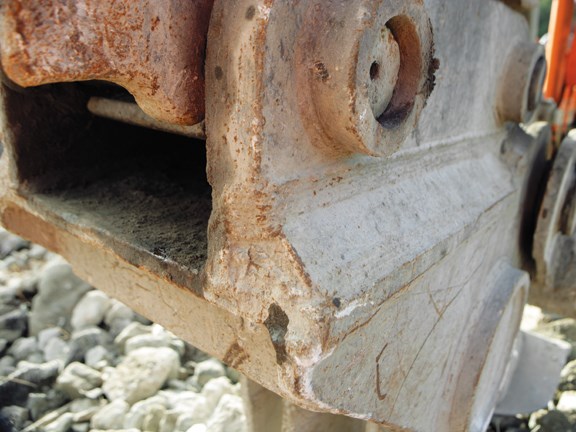 An angled lengthwise brace prevented the steel tearing
An angled lengthwise brace prevented the steel tearing


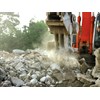

|
|
The widened base plate has incresed efficiency
|

|
|
A damper fitted to the pulveriser arm would dissipate shock energy
|

|

|
|
An angled lengthwise brace prevented the steel tearing
|

|
Keep up to date in the industry by signing up to Deals on Wheels' free newsletter or liking us on Facebook.

.jpg)

.jpg)

.jpg)

